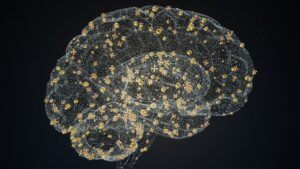Neuromorphic Engineering: Shaping the Future of Artificial Intelligence


Artificial intelligence continues to reshape industries, yet it struggles with limits in speed, adaptability, and energy use. While today’s algorithms solve many problems, they cannot fully match the way human brains process information. This is where neuromorphic engineering enters the picture. By building machines that think more like humans, neuromorphic engineering could lead to an artificial intelligence revolution unlike any seen before.
Understanding Neuromorphic Engineering
Neuromorphic engineering is a field that designs computing systems modeled after the human brain. Instead of relying on the traditional approach where memory and processing remain separate, neuromorphic systems integrate them, mimicking biological neurons and synapses.
These machines use spiking neural networks (SNNs), which fire signals much like neurons communicate. This enables them to process information in parallel and respond to data instantly, creating systems that are both efficient and intelligent.
Why the Brain Inspires Technology
The human brain is a natural wonder. It uses just about 20 watts of power—less than a household light bulb—while handling trillions of calculations. Conventional computers, in contrast, consume massive energy to run AI models.
By imitating the brain’s structure and function, neuromorphic engineering provides solutions where:
- Power consumption stays low.
- Information flows in real-time.
- Systems adapt quickly to changing environments.
This brain-inspired model pushes artificial intelligence toward more natural and sustainable growth.
Neuromorphic Chips: The Building Blocks
At the core of neuromorphic engineering are specialized processors known as neuromorphic chips. Unlike CPUs or GPUs, which process data sequentially, these chips manage information in parallel using spikes.
Prominent developments include:
- Intel Loihi 2: Capable of on-chip learning, allowing systems to adapt without retraining large datasets.
- IBM TrueNorth: A chip that simulates over a million neurons while consuming only a fraction of traditional processors’ energy.
- SpiNNaker (Spiking Neural Network Architecture): A European supercomputer that connects millions of small processors to simulate brain-like behavior.
These innovations mark a new era where AI becomes smarter, faster, and significantly more energy-efficient.
Real-World Applications of Neuromorphic Engineering
The shift toward neuromorphic systems is not theoretical. Several industries are already experimenting with and deploying these technologies.
Healthcare
Neuromorphic chips improve brain-computer interfaces, giving patients with disabilities new opportunities for mobility and communication. They also power medical imaging systems that detect diseases more accurately in real time.
Smart Cities and IoT
Internet of Things devices often face limitations due to battery power. Neuromorphic engineering solves this by enabling sensors and devices that process information locally with minimal energy use.
Robotics
Robots using neuromorphic chips learn quickly and adapt to unpredictable environments. This makes them essential in fields like disaster recovery, space exploration, and precision manufacturing.
Autonomous Vehicles
Self-driving cars rely heavily on quick decision-making. Neuromorphic processors handle vast streams of sensory data instantly, reducing delays and improving safety.
How Neuromorphic Engineering Transforms AI
Traditional AI requires enormous datasets and centralized training, often resulting in delays and high costs. Neuromorphic AI changes that model:
- Adaptive Learning: Learns on the fly without retraining entire models.
- Local Processing: Processes data at the edge, reducing reliance on cloud servers.
- Energy Savings: Operates efficiently, making mobile AI more practical.
- Human-Like Perception: Handles vision, sound, and decision-making in ways that mirror human senses.
This transformation allows artificial intelligence to expand into new frontiers where conventional computing could not go.
Energy Efficiency: The Key Advantage
One of the most significant challenges for AI today is power consumption. Training large-scale models consumes enormous amounts of electricity, raising sustainability concerns. Neuromorphic chips address this issue head-on.
For instance, Intel’s Loihi can solve optimization problems while using a fraction of the power of GPUs. Similarly, TrueNorth runs large networks with extremely low energy demands. This means neuromorphic systems not only boost performance but also pave the way for green AI solutions that support sustainability goals.
Challenges and Limitations
Despite its promise, neuromorphic engineering still faces barriers:
- Hardware Complexity: Designing chips that truly match neurons remains challenging.
- Software Gap: Current AI frameworks are not fully compatible with spiking neural networks.
- Adoption Curve: Industries are hesitant to transition away from established models.
- Scalability Issues: Replicating billions of neurons at scale remains a long-term goal.
Overcoming these challenges requires collaboration between researchers, chipmakers, and software developers.
The Future of Neuromorphic Engineering
The future of neuromorphic engineering is bright. As computing demand grows, industries will seek sustainable, efficient, and intelligent alternatives to current AI systems.
Future directions may include:
- Integration with everyday devices, from smartphones to wearable tech.
- Brain-computer symbiosis is where machines and humans collaborate more directly.
- Mass adoption of autonomous systems makes them safer and more reliable.
- AI sustainability breakthroughs help reduce the environmental footprint of advanced models.
This shift will mark a true revolution in artificial intelligence—one powered by the brain itself.
Neuromorphic engineering stands at the frontier of the artificial intelligence revolution. Drawing inspiration from the human brain, it unlocks solutions that traditional computing cannot achieve. With neuromorphic chips, AI becomes more adaptive, energy-efficient, and capable of real-time decision-making.
The path ahead holds challenges, yet the potential benefits far outweigh them. Neuromorphic engineering is more than a technological upgrade—it’s the foundation of a smarter, greener, and more human-like future for artificial intelligence.
